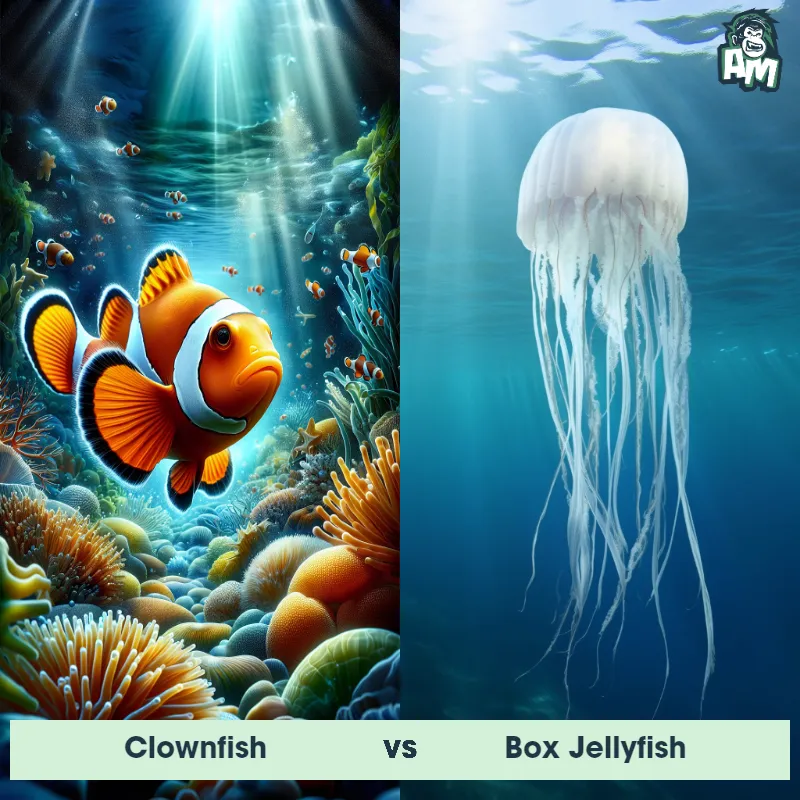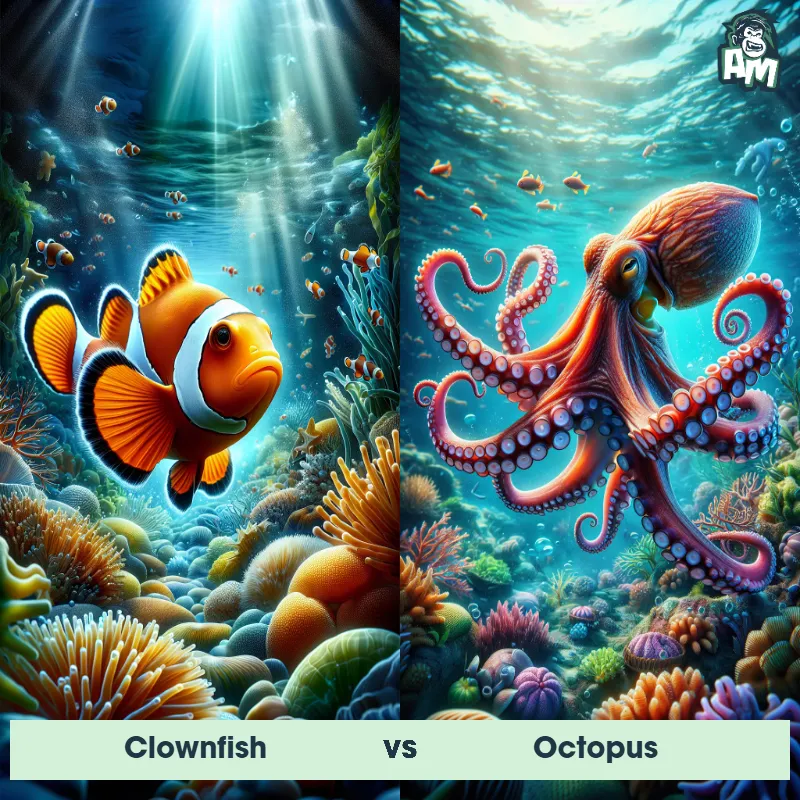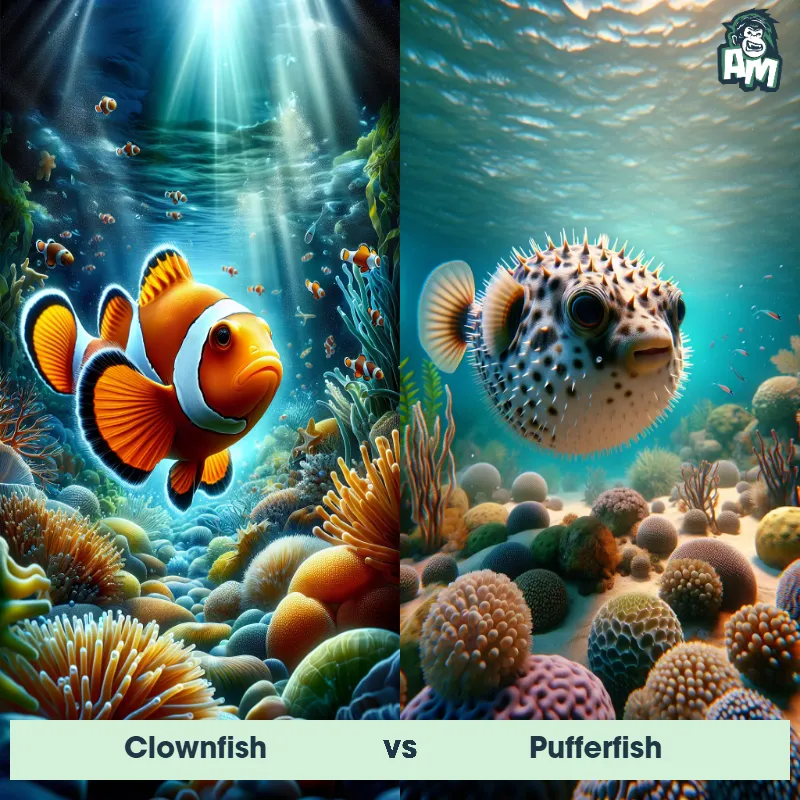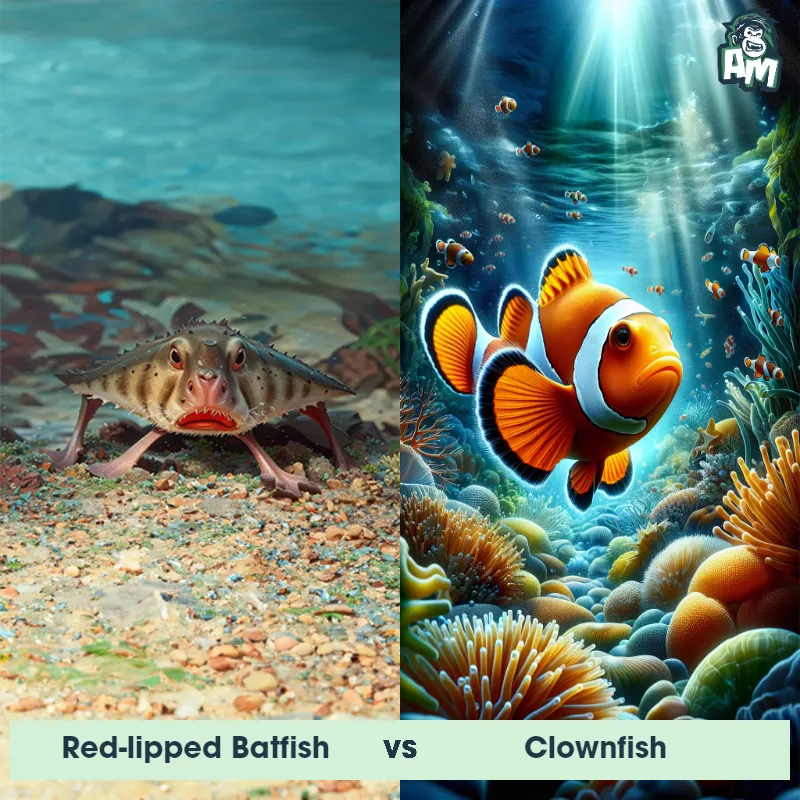The Clownfish
The Clownfish, also known as the anemonefish, is a small tropical fish that belongs to the family Pomacentridae. They are characterized by their vibrant colors, with their bodies covered in shades of orange, yellow, and white, often adorned with bold stripes or spots. Clownfish have a unique relationship with sea anemones, where they seek shelter and protection among their poisonous tentacles without being stung. They have a specialized mucus layer on their skin that makes them immune to the venomous sting.
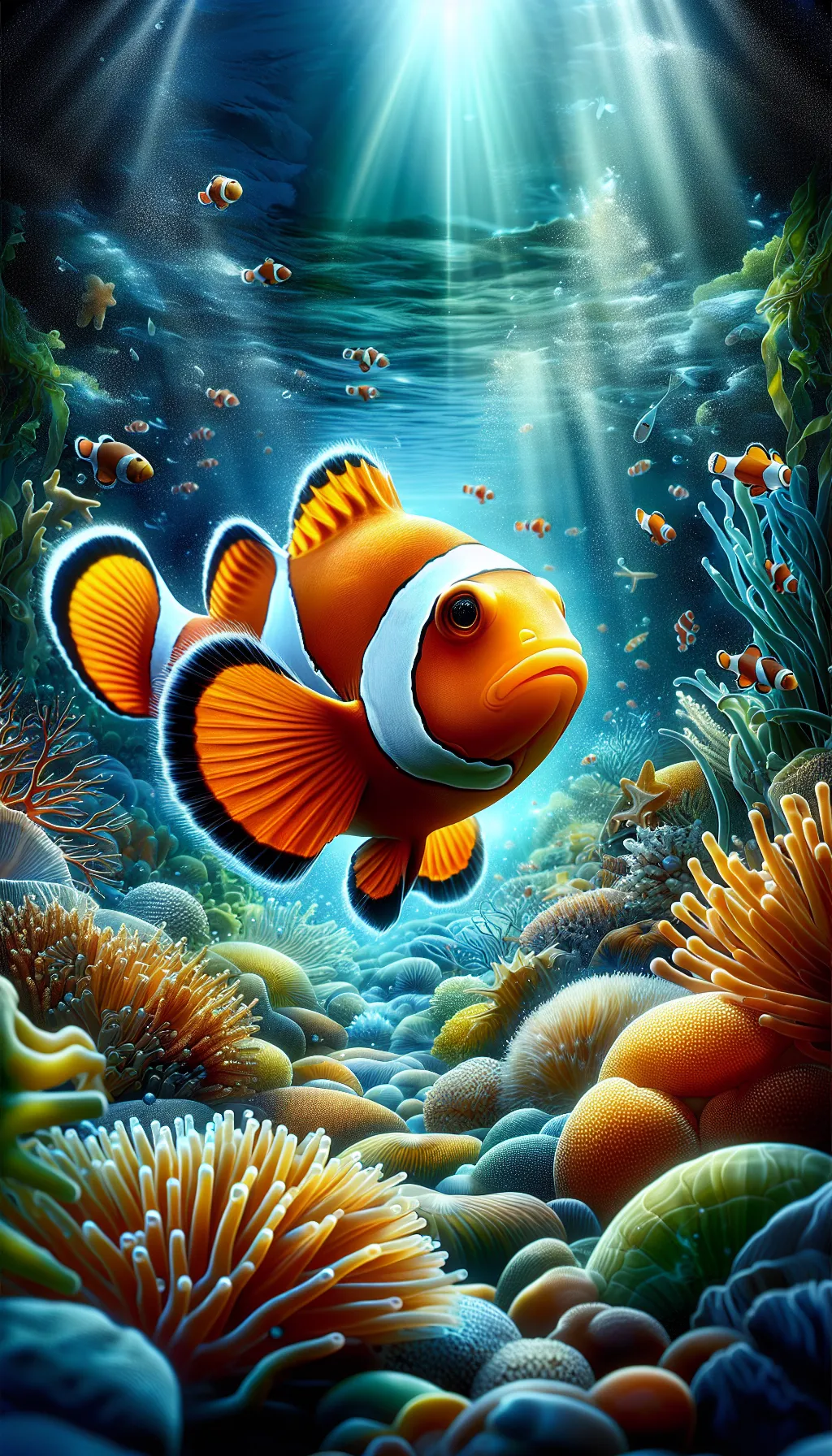
| Clownfish | |
|---|---|
| Size | 2 to 5 inches (5 to 13 cm) |
| Weight | Varies, but typically less than 1 pound (less than 0.5 kg) |
| Speed | 1.5mph (2.41km/h) |
| Key Strength | Agile swimmers and good at defending their territory |
| Biggest Weakness | Relatively small size and lack of physical aggression |
| Scientific Name | Amphiprioninae |
| Family | Pomacentridae |
| Habitat | Coral reefs, lagoons |
| Geography | Indo-Pacific region |
| Diet | Omnivorous, eats small crustaceans, algae, and plankton |
| Lifespan | 7 years - 10 years |

The Clownfish
The Clownfish, also known as the anemonefish, is a small tropical fish that belongs to the family Pomacentridae. They are characterized by their vibrant colors, with their bodies covered in shades of orange, yellow, and white, often adorned with bold stripes or spots. Clownfish have a unique relationship with sea anemones, where they seek shelter and protection among their poisonous tentacles without being stung. They have a specialized mucus layer on their skin that makes them immune to the venomous sting.
Fun Fact: Clownfish are sequential hermaphrodites, starting their lives as males and then changing into females as they mature. In each social group, there is a dominant female, an alpha male, and a hierarchy of subordinate males. If the dominant female dies, the alpha male will transition into a female and one of the subordinate males will become the new alpha male.
| Clownfish | |
|---|---|
| Size | 2 to 5 inches (5 to 13 cm) |
| Weight | Varies, but typically less than 1 pound (less than 0.5 kg) |
| Speed | 1.5mph (2.41km/h) |
| Key Strength | Agile swimmers and good at defending their territory |
| Biggest Weakness | Relatively small size and lack of physical aggression |
| Scientific Name | Amphiprioninae |
| Family | Pomacentridae |
| Habitat | Coral reefs, lagoons |
| Geography | Indo-Pacific region |
| Diet | Omnivorous, eats small crustaceans, algae, and plankton |
| Lifespan | 7 years - 10 years |
Clownfish Matchups
We use AI to simulate matchups between the Clownfish and other animals. Our simulation considers size, strength, and natural predatory behaviors to determine the most likely outcome.

Can't find the Matchup you want?
Create Your Own MatchupClownfish: Diet, Predators, Aggression, and Defensive Behaviors
What do Clownfish eat?
Clownfish are omnivores, feeding on a diet that includes algae, plankton, mollusks, and small crustaceans. They also have a symbiotic relationship with sea anemones, where they feed on the leftovers from the anemone's meals and in return receive protection from predators.
Do Clownfish have any predators?
Clownfish have several natural predators in the ocean, including larger fish, sharks, eels, and octopuses. However, their main line of defense against predators is their symbiotic relationship with sea anemones. The stinging tentacles of the anemone protect the Clownfish from being eaten by other fish.
Are Clownfish aggressive?
Clownfish are generally not considered aggressive towards other fish species. However, they can become territorial and aggressive towards other Clownfish, especially when establishing dominance within a group or defending their territory.
Do Clownfish fight?
Clownfish do engage in aggressive behavior, particularly when establishing dominance within a group or defending their territory. This behavior may manifest in chasing, pushing, and biting other Clownfish.
How do Clownfish defend themselves?
Clownfish have a few defense mechanisms to protect themselves from predators. Their main defense is their symbiotic relationship with sea anemones, which provides them with protection from larger fish. Additionally, Clownfish have a mucus coating on their skin that can act as a deterrent to predators.
What is the biggest weakness of Clownfish in a fight?
The biggest weakness of Clownfish in a fight is their small size and lack of physical strength compared to some of their predators. While they may exhibit aggressive behavior towards others of their own species, they may struggle to defend themselves against larger, more powerful predators.
Fun Fact: Contrary to popular belief, Clownfish can live in different types of anemones, not just the iconic sea anemone. They have been observed forming symbiotic relationships with other invertebrates, such as corals, specifically those with branching forms, providing them with shelter and food sources.
Fun Fact: Clownfish have a special way of communicating with each other by making popping and chirping sounds. These sounds are produced by grinding their teeth together and are used for various purposes, such as establishing territory, attracting mates, or warning other fish of potential dangers. Additionally, each species of Clownfish has its own unique sound, allowing them to differentiate between individuals and recognize their own kind.



